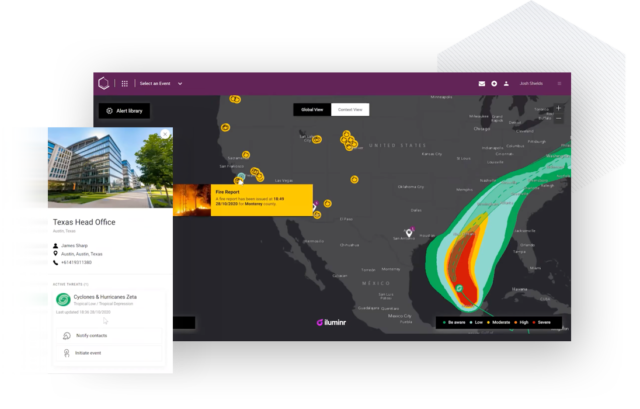When COVID-19 forced more than 40% of the Australian workforce to stay at home, many organizations were left scrambling to keep their people connected for months at a time. Knowing that the ongoing pandemic has annihilated overcrowded workplaces for the foreseeable future, and that even business-as-usual work-from-home arrangements have increased over 400% since 2010, Emergency Management teams in Australia should reassess what they consider to be workplace hazards and extend their horizon beyond the office’s four walls.
40% of the Australian Workforce was forced to stay at home during the initial outbreak of COVID-19.
Taking Your Multi-Location Threat Monitoring Online
Instead of waiting for another COVID-19 outbreak or catastrophic natural disaster to realize that your team is unprepared for distributed critical events, an ongoing threat monitoring and mass communication system can help your team prepare. How so?
1. Real-time threat monitoring can pre-emptively warn you of potential emergencies
2. Organizational maps can help you keep an eye on threats that may affect your team
3. A mass communications system can help employees stay connected and informed during a critical event
4. Critical event rooms can help you centralize intelligence and filter out misinformation
Knowing that the two factors needed to successfully navigate crises are time and preparation, innovative critical event management technology can help Emergency Managers leverage both by sending early warning notifications and keeping them in touch with their team.
How could this look in action? Consider the following worst-case-scenario:
- Your organization is working-from-home due to COVID-19
- Half of your work-from-home employees are based in Queensland
- A tropical cyclone and potential flood are expected to hit Brisbane while you’re situated in NSW
 Instead of scrambling to confirm who is on-site, off-site, and who has travelled abroad, an online critical event management platform can help you to:
Instead of scrambling to confirm who is on-site, off-site, and who has travelled abroad, an online critical event management platform can help you to:
- Map key organizational locations, including distributed worker whereabouts, ahead of severe weather events
- Receive early warning of escalating natural disasters that may impact your team
- Send out welfare polls to confirm your employee’s location and safety
- Rapidly analyze which impacted staff are key ingredients to the organization’s critical functions
By acting early to verify your employees’ wellbeing and triage their need for support, Emergency Managers can focus on actioning the next right step to keep their people safe and informed.
Staying Connected During Critical Events
How can you keep distributed teams working together and safe during a critical event? By the following critical event management ingredients ahead of time, you can get a head start on keeping your people safe today.
1. Pinpoint your key organizational locations. From offices to warehousing, critical supply chain functions and work-from-home employees, mapping your key organizational locations and setting up background threat monitoring can help you keep an eye on potential threats. 
2. Turn on live alert feeds. Instead of manually monitoring for potential threats, emergency managers can turn on live threat alerts to ensure their background monitoring system informs them of an escalating threat before it reaches the tipping point.
3. Send out mass notifications to confirm wellbeing. In the face of an escalating event, triage your distributed workers and key business functions to determine who needs support and prioritize what needs to be actioned first. By confirming the safety and wellbeing of one remote team, you can focus on the people who need guidance and keep all stakeholders moving forward and informed.
By arming Emergency Managers with the tools needed to receive and send early warning notifications and first response workflows, organizations can keep their community connected by leveraging technology to stay ahead of a critical event.
Streamlined live data and early warning notifications can help teams action first response plans even when separated from their team. By prioritizing safety and minimizing potential impact, critical event management platforms, like iluminr, can help Emergency Managers adapt to our new work-from-home arrangements and deliver a better disaster response no matter where they are.
—
Sources














